
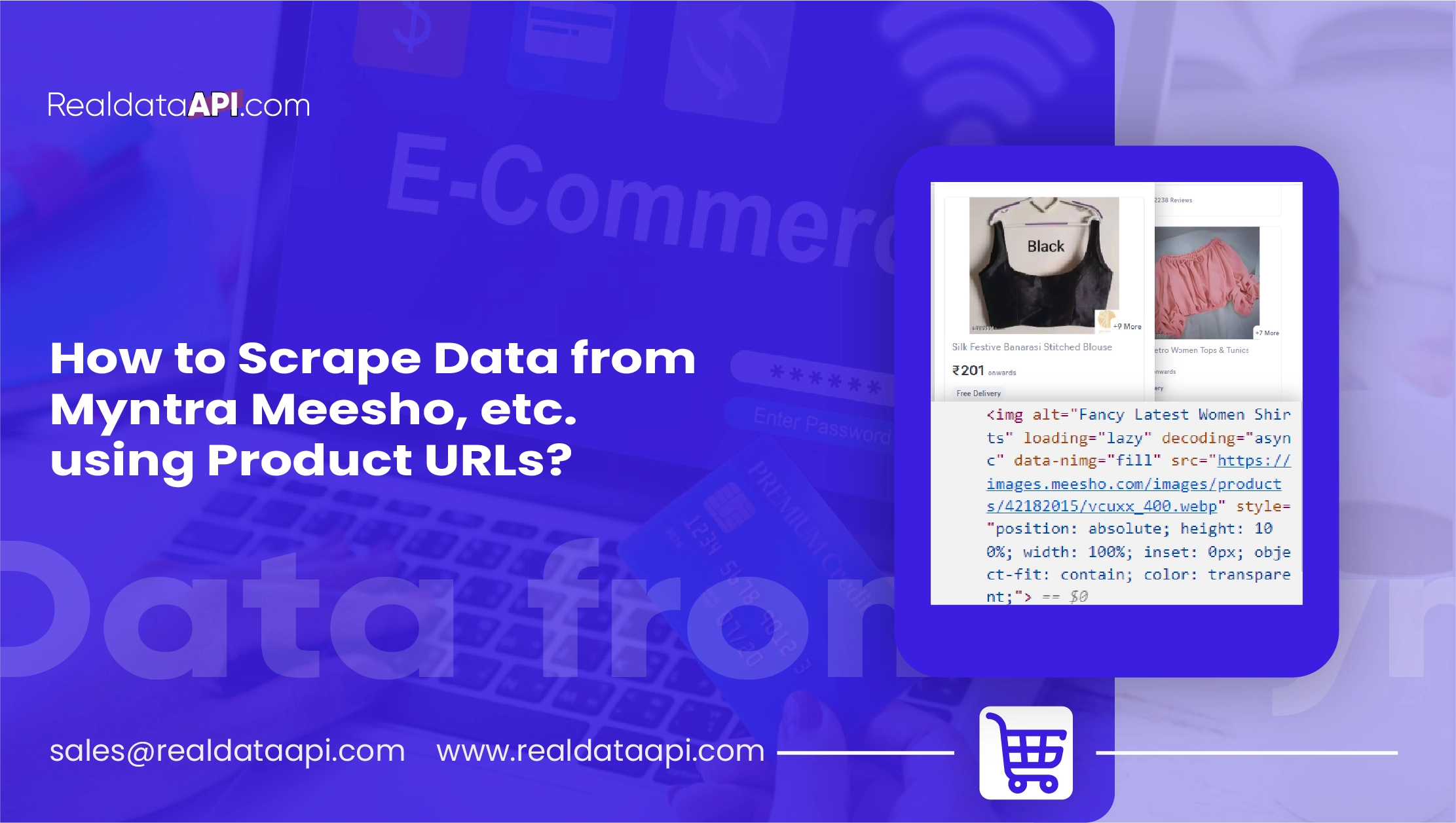
Introduction
In today's digital age, data is king, and eCommerce stores are a treasure trove of valuable information. Whether you're a business owner looking to stay competitive or a data enthusiast seeking insights, web scraping can be a powerful tool to extract price and item data from various eCommerce platforms like Amazon, Flipkart, Myntra, Ajio, and Tata Cliq. In this blog, we'll explore how to scrape price and item name data from these platforms and unleash the potential of eCommerce data collection.
In the vast landscape of eCommerce, data reigns supreme. The ability to gather insights into pricing trends, product availability, and consumer behavior can make all the difference in the success of an online business. Fortunately, with the advent of ecommerce product data scraping techniques, extracting valuable data from eCommerce stores has become easier than ever before.
What is Web Scraping?
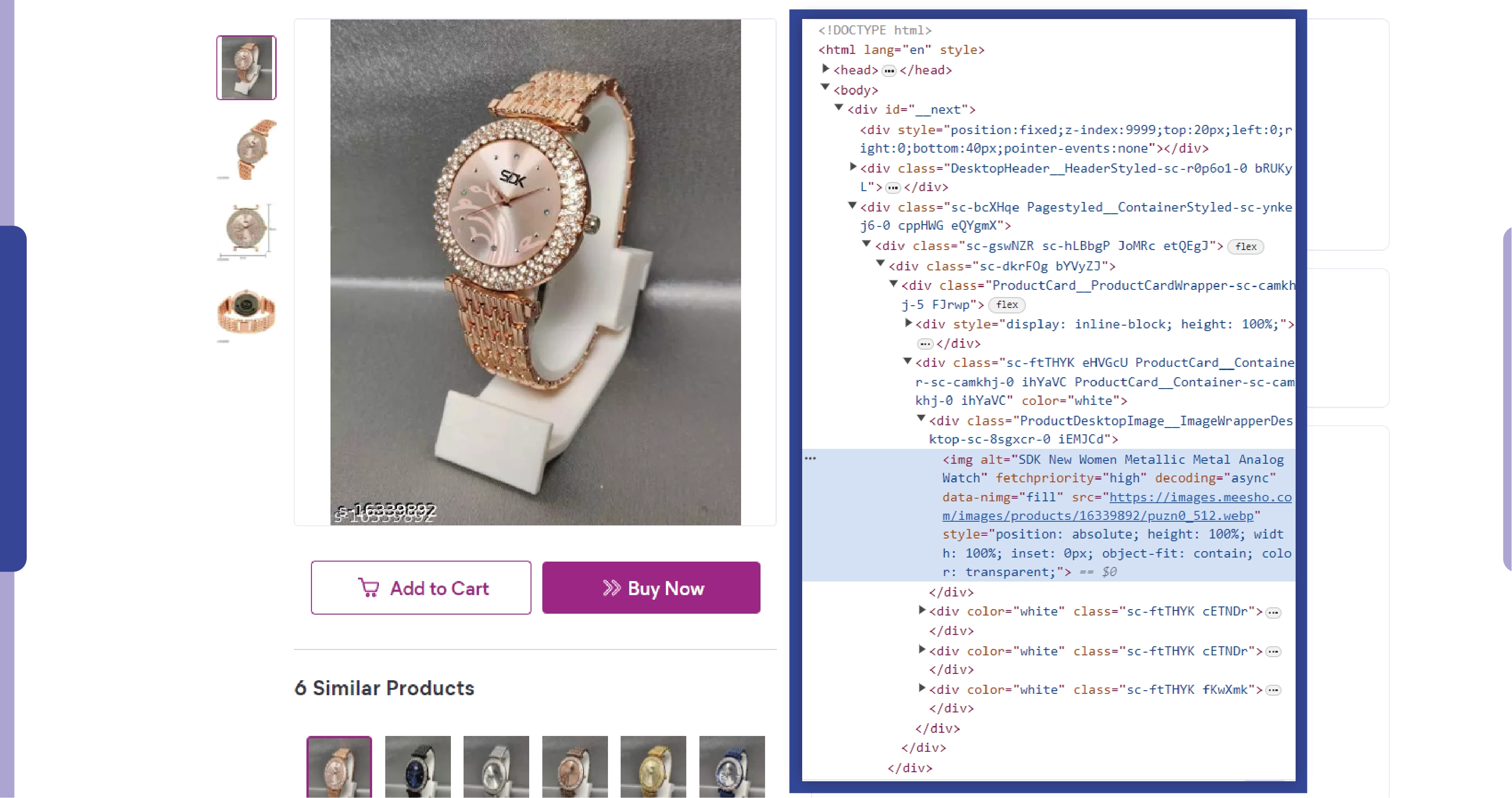
Web scraping, an automated process of extracting data from websites, is a powerful tool that has gained popularity for its versatility and the abundance of information it can access on the Internet. By accessing a web page's HTML code, retrieving specific elements, and organizing that information into a structured format for analysis, web scraping offers businesses, researchers, academics, journalists, and data journalists a unique opportunity to harness the wealth of data available online.
The process of web scraping typically involves several key steps. First, a web scraping tool or script sends a request to the target website, simulating the behavior of a web browser. Once the web server responds, the tool retrieves the HTML code of the requested page. From there, the tool parses the HTML code to identify and extract the desired data, such as product prices, descriptions, or customer reviews.
Web scraping is a versatile tool that can be applied across a wide range of industries. For instance, businesses can use web scraping to monitor competitor prices, gather market research data, or track customer sentiment. In the academic and research fields, web scraping can be used to collect data for studies or analyze trends in public opinion. Similarly, journalists and data journalists can employ web scraping to gather information for investigative reporting or data-driven storytelling. The possibilities are endless.
One of the most common web scraping applications is to scrape price and item name data from eCommerce websites. By scraping product data, businesses can analyze pricing trends, monitor competitor offerings, and optimize their product listings to remain competitive. Overall, ecommerce product price data scraping offers a powerful means of accessing and utilizing the vast amount of data available on the Internet.
Why Scrape Data from eCommerce Websites?
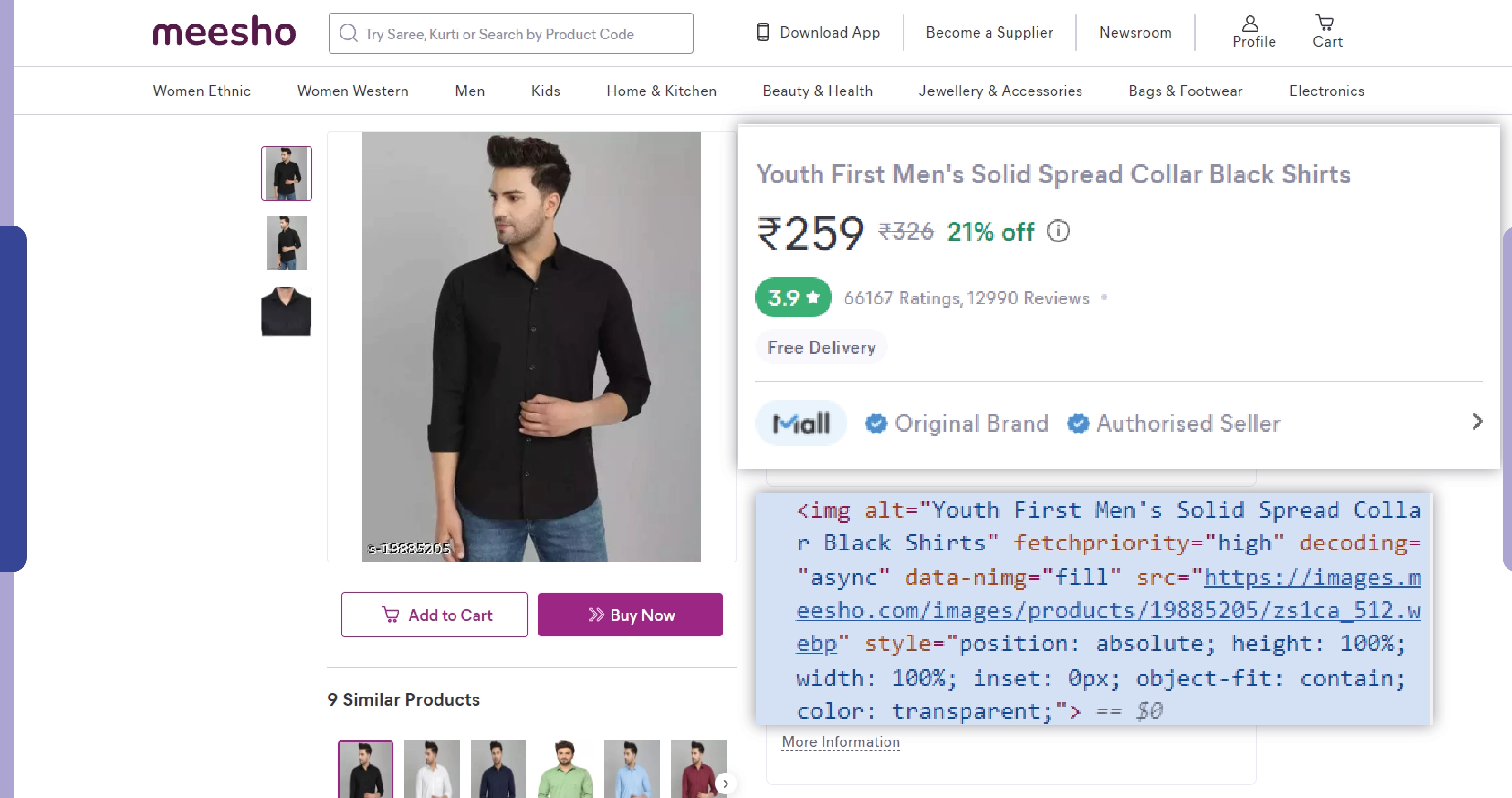
Ecommerce product price data scraping has become increasingly essential in today's digital landscape, offering businesses and individuals valuable insights and competitive advantages. With the abundance of online shopping platforms like Myntra, Meesho, and others, the need to use Myntra product price data scraping and Meesho product price data scraping through techniques such as web scraping has become paramount.
Competitive Analysis and Pricing Strategies
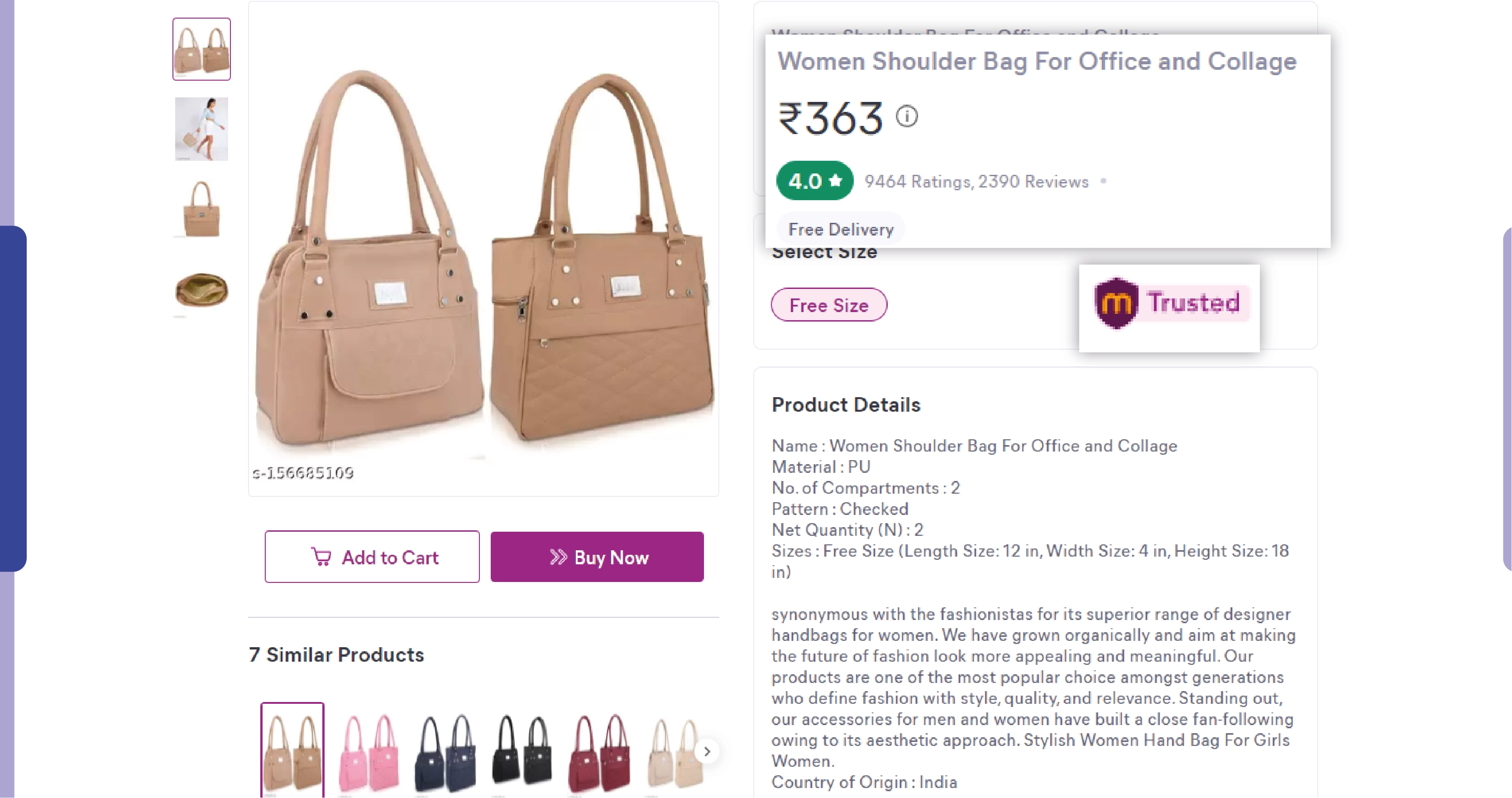
One primary reason to scrape data from eCommerce websites is to conduct competitive analysis and formulate effective pricing strategies. By web scraping Myntra data or web scraping Meesho data, businesses can gain valuable insights into competitor pricing trends, product availability, and promotional strategies. Analyzing this data enables businesses to adjust their pricing strategies accordingly, ensuring competitiveness in the market.
Market Research and Trend Analysis
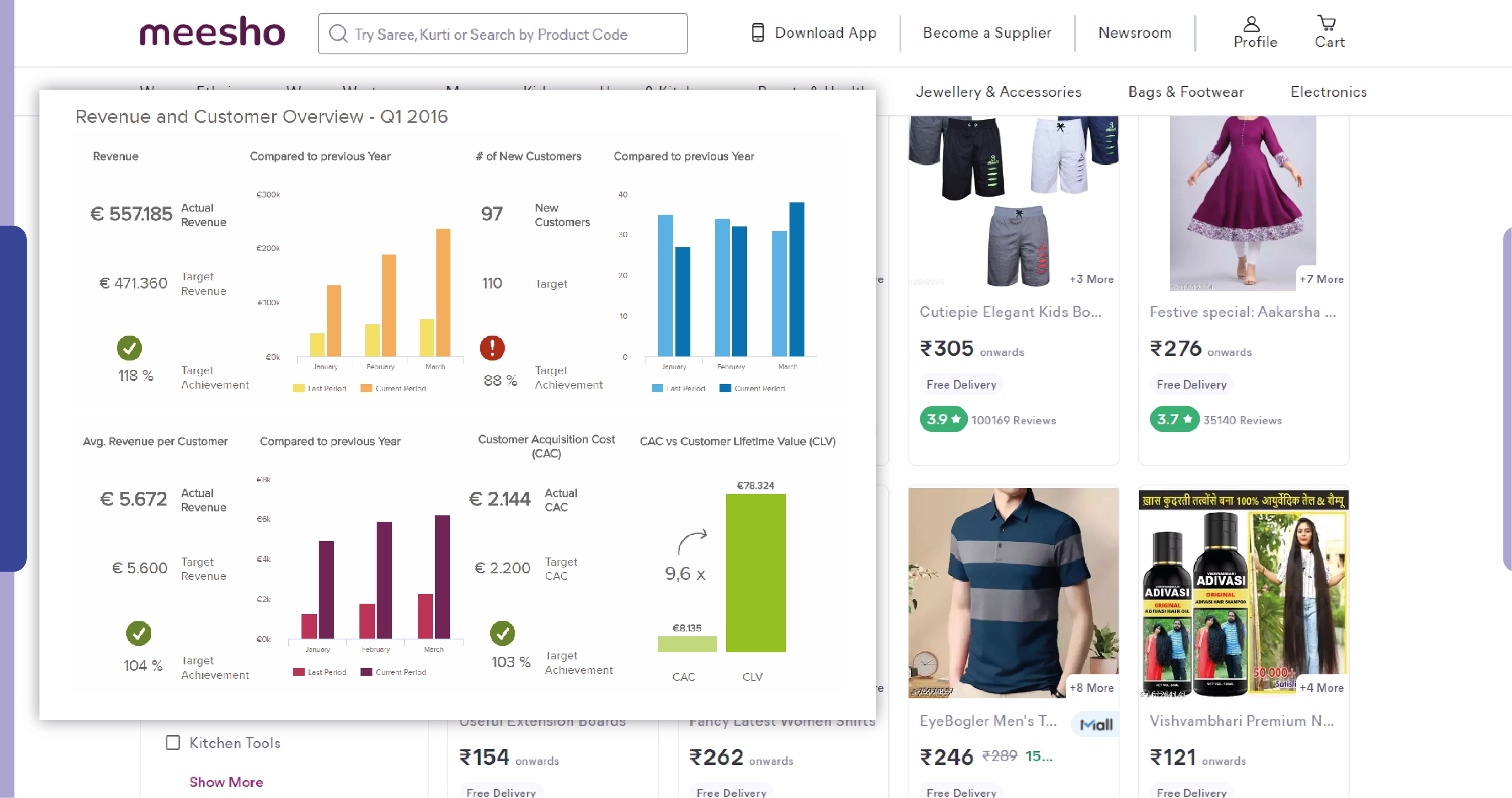
Ecommerce product data scraping also facilitates market research and trend analysis. Businesses can identify emerging trends, consumer preferences, and market demand by collecting data on product prices, customer reviews, and sales volumes. This information can inform product development, marketing campaigns, and inventory management decisions, helping businesses stay ahead of the curve and capitalize on market opportunities.
Optimizing Product Listings and Assortment
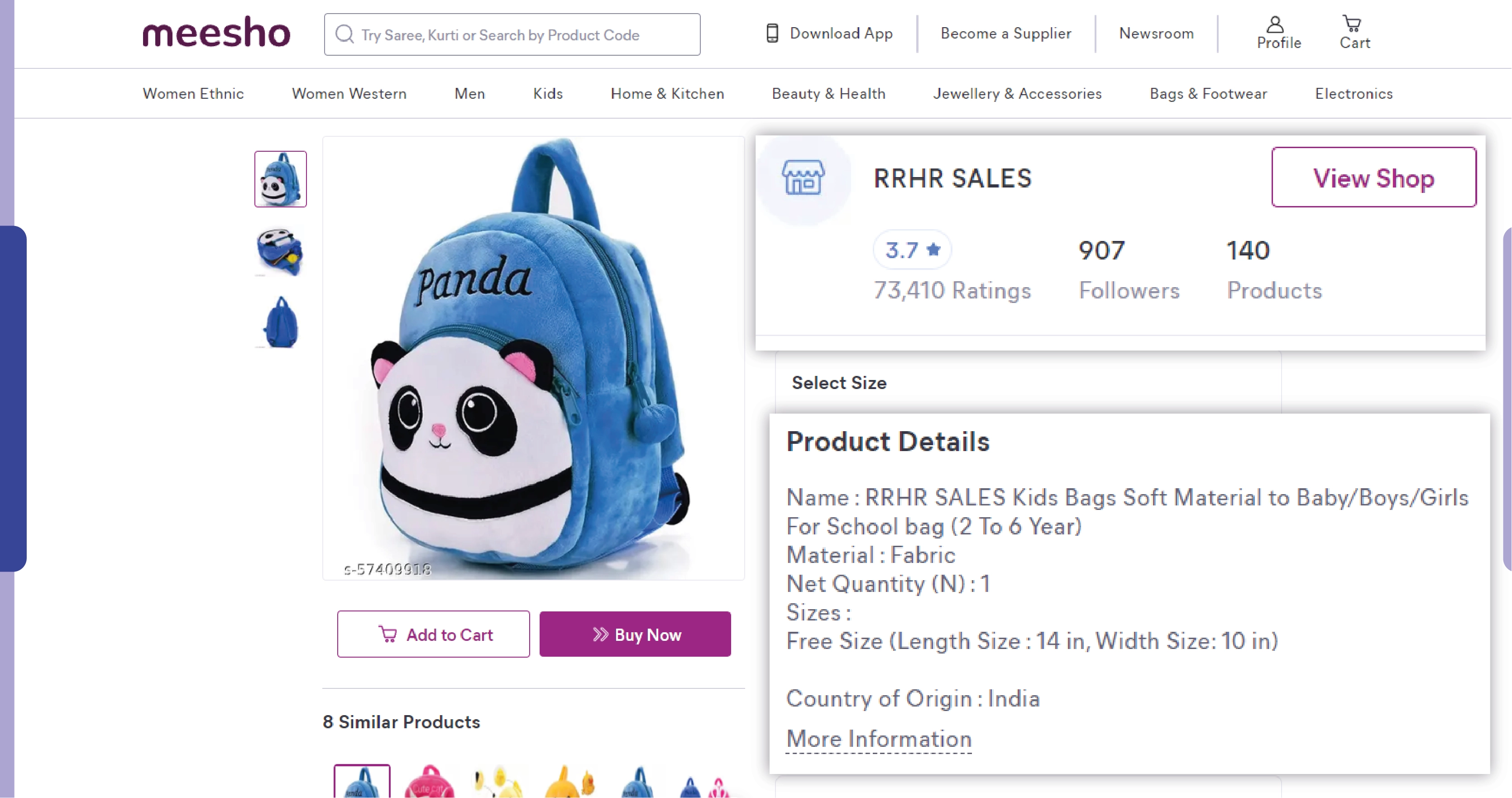
Ecommerce product data scraping allows businesses to optimize their product listings and assortment effectively. By analyzing data on product attributes, customer ratings, and sales performance, businesses can identify high-demand products, refine product descriptions, and curate product assortments to meet customer needs and preferences. This optimization process helps businesses enhance the visibility and appeal of their offerings, ultimately driving sales and revenue growth.
Monitoring Competitor Activities
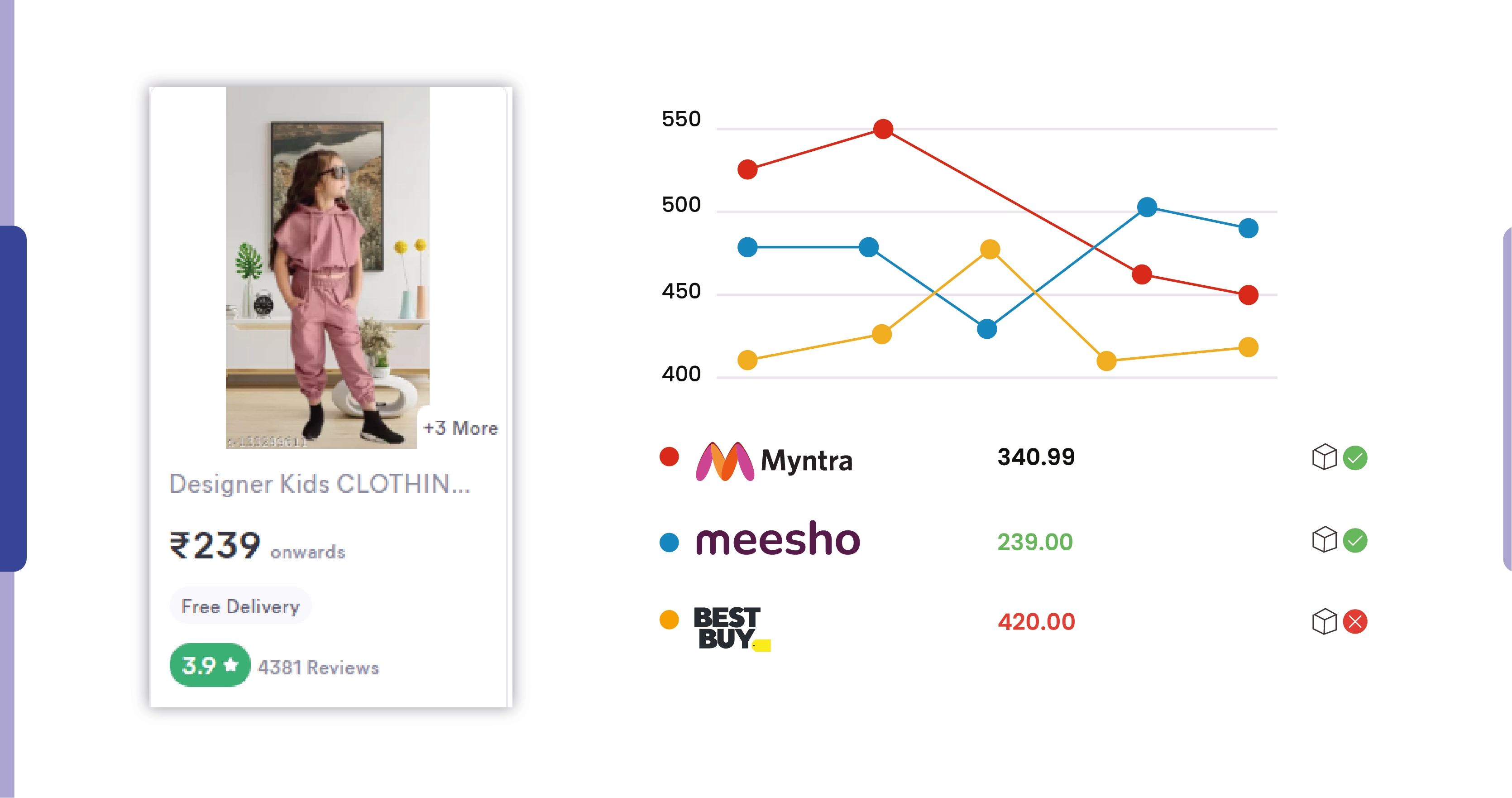
Ecommerce product price data scraping also enables businesses to monitor competitor activities closely. By tracking competitor product listings, pricing changes, and promotional campaigns, businesses can stay informed about market dynamics and strategies. This information empowers businesses to respond promptly to competitive threats, capitalize on opportunities, and differentiate themselves in the market.
Enhancing Customer Experience
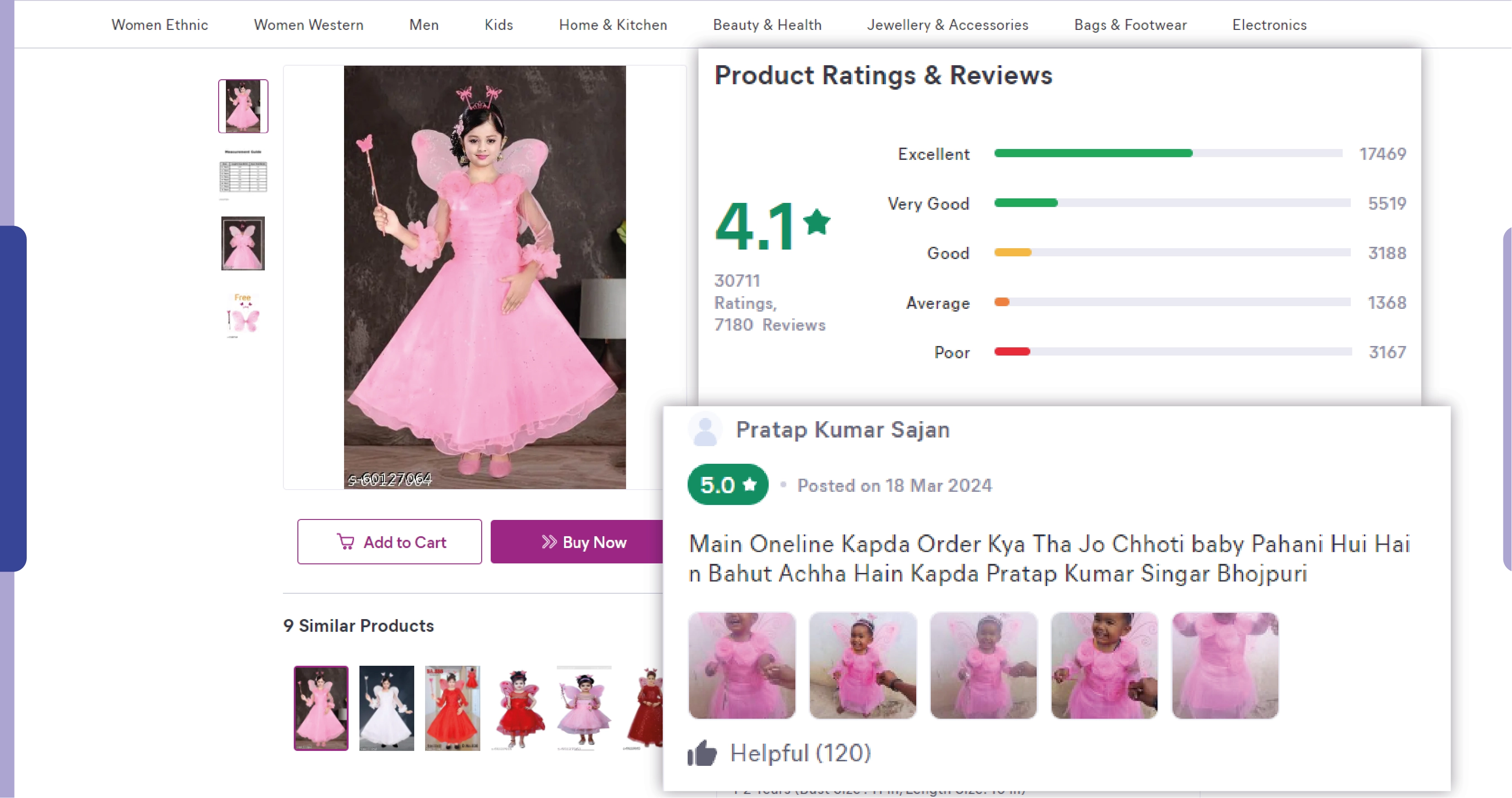
Ecommerce data collection through web scraping can also enhance the customer experience. Businesses can gain valuable insights into customer preferences, pain points, and satisfaction levels by analyzing customer reviews, feedback, and ratings from eCommerce platforms. This information can tailor products, services, and marketing strategies to meet customer needs and expectations better, fostering loyalty and driving repeat business.
In conclusion, ecommerce product price data scraping is crucial for businesses seeking to gain a competitive edge, understand market dynamics, optimize product offerings, and enhance the customer experience. Businesses can unlock valuable insights that drive informed decision-making and business success in the ever-evolving eCommerce landscape by leveraging web scraping techniques to extract price and item data from platforms like Myntra and Meesho.
Key Data Fields to Scrape from eCommerce Websites
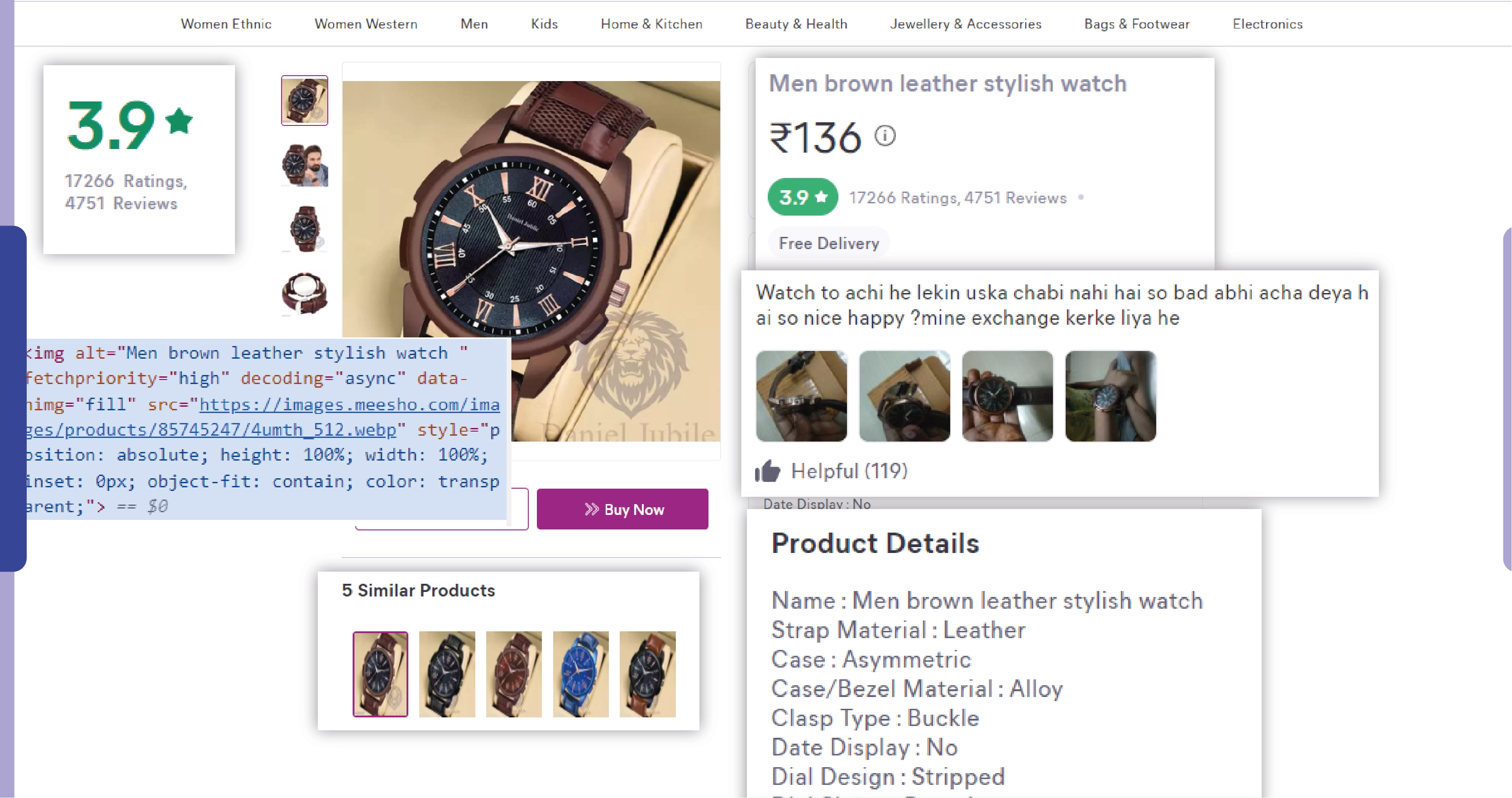
When web scraping Myntra, Meesho, etc., several key data fields are essential to collect for comprehensive analysis and decision-making. These data fields include:
- Product Name: The name or title of the product sold on the eCommerce website.
- Product Price: The product's price includes any discounts or special offers.
- Product Description: A brief description or overview of the product's features, specifications, and benefits.
- Product Category: The category or classification under which the product is listed on the eCommerce website.
- Product Rating: The average rating or feedback score given by customers who have purchased or reviewed the product.
- Customer reviews and feedback about the product, including comments, ratings, and sentiments.
- Product Availability: Information about the product's availability, including stock status and estimated delivery times.
- Seller Information: Details about the seller or vendor offering the product, including their name, ratings, and reputation.
- Shipping Information: Shipping options, costs, and delivery methods available for the product.
- Product Variants: If applicable, details about different variants or options of the product, such as size, color, or quantity.
- Product URL: The link to the eCommerce website's product page for reference and navigation purposes.
Collecting these key data fields through web scraping enables businesses to analyze pricing trends, monitor competitor activities, understand customer preferences, and optimize product listings for better visibility and sales performance. Additionally, this data can inform strategic decisions related to inventory management, marketing campaigns, and overall business strategy in the competitive eCommerce landscape.
Scraping Price and Item Data from eCommerce Stores
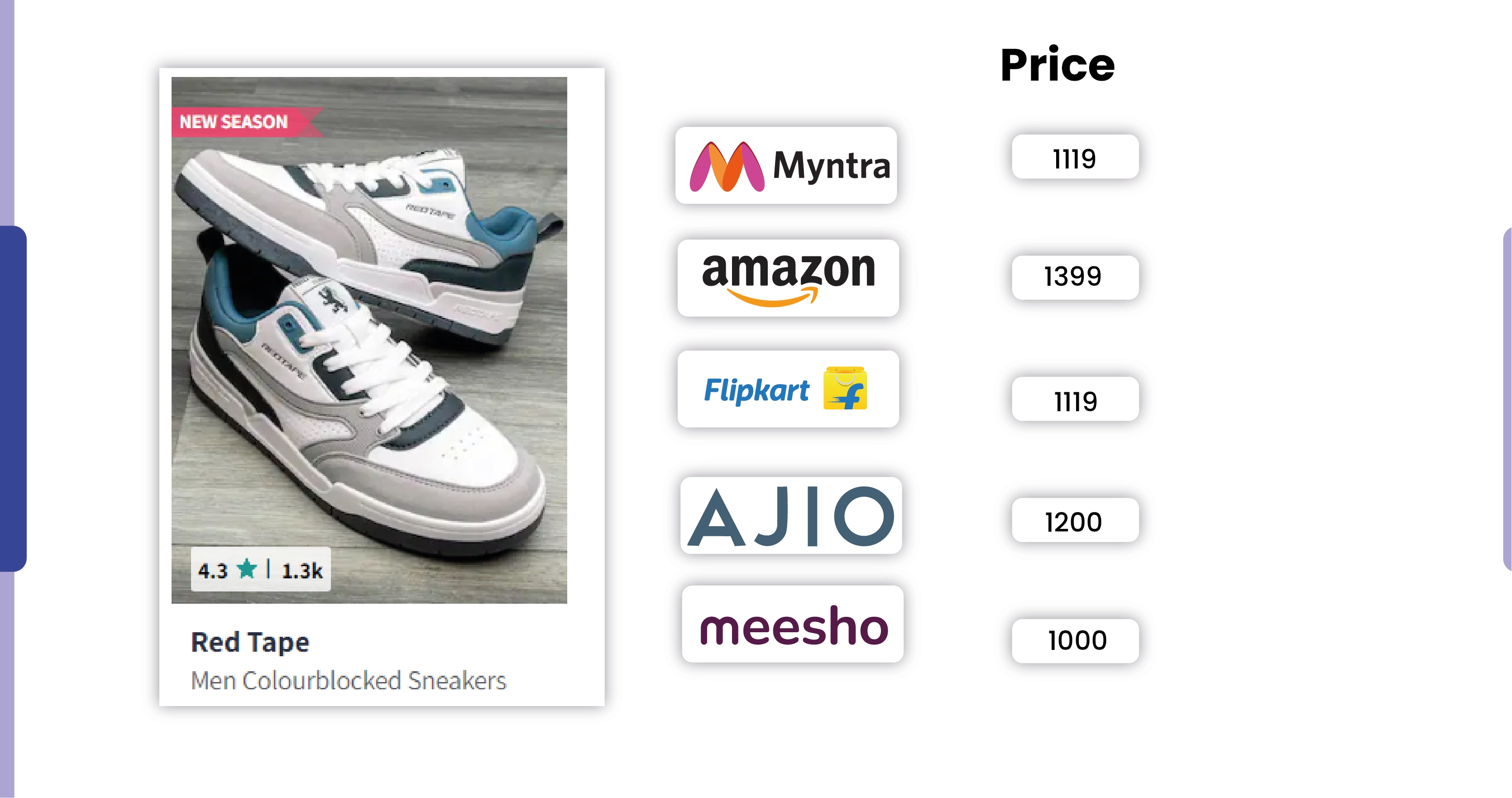
A systematic approach is paramount in navigating the realm of web scraping to extract price and item data from prominent eCommerce platforms like Amazon, Flipkart, Myntra, Ajio, and Tata Cliq. Here's a detailed breakdown of the process and some essential tools and techniques to accomplish this task effectively.
Identifying Target Data
Before initiating the scraping process, it's crucial to pinpoint the specific data of interest. In this scenario, our focus is scraping price and item name data from product listings on these eCommerce websites.
Choosing a Web Scraping Tool
Selecting the right web scraping tool is instrumental in streamlining the data extraction. Popular options include BeautifulSoup, Scrapy, and Selenium, each offering unique functionalities to cater to different scraping requirements.
Extracting Data from eCommerce Websites
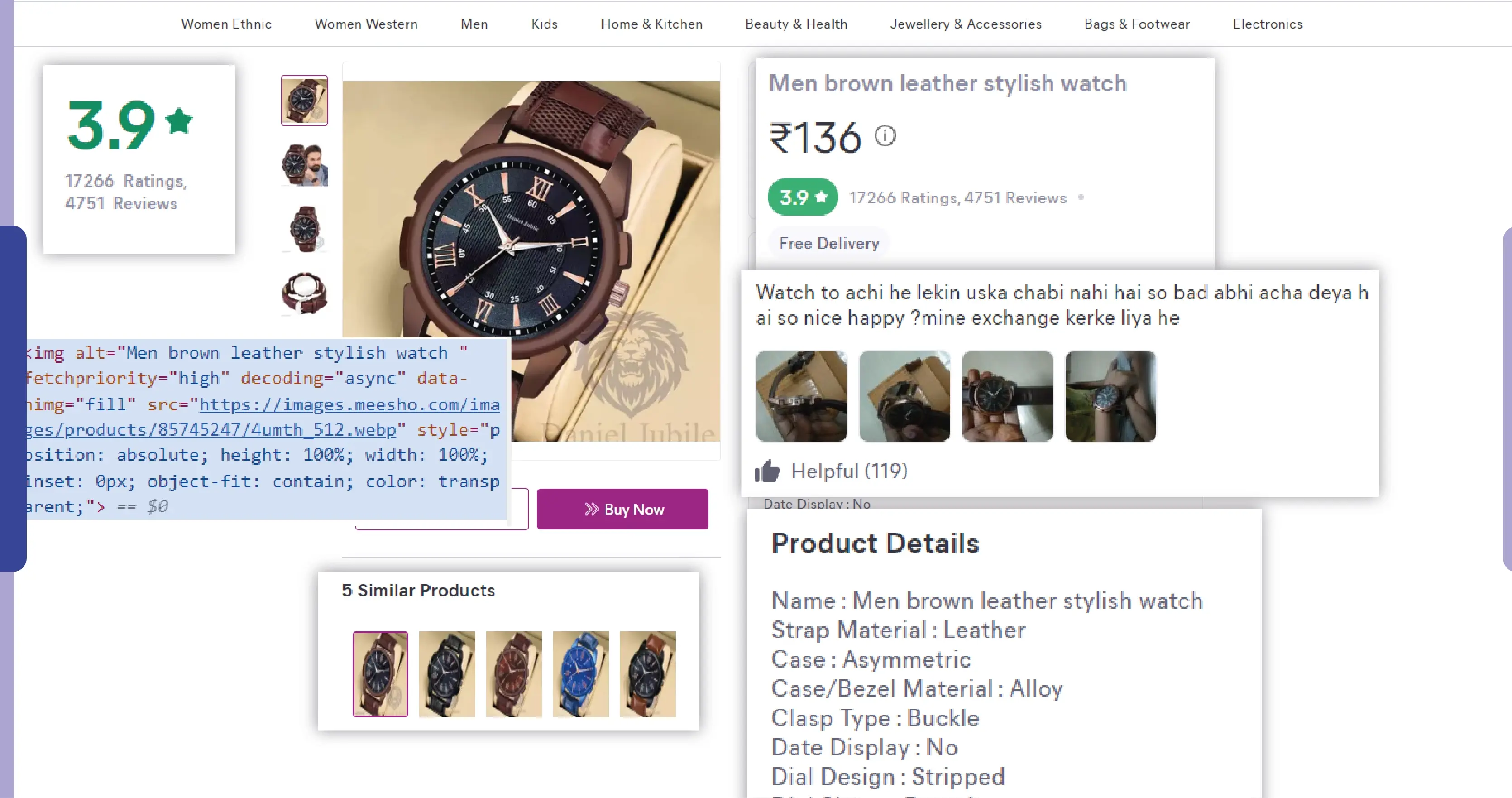
Amazon: Utilize BeautifulSoup or Selenium to navigate through Amazon's product pages. Locate the elements containing price and item name information and extract the relevant data accordingly.
Flipkart: Employ web scraping tools to traverse Flipkart's website structure. Identify the desired elements of housing price and item name data and extract the information seamlessly.
Myntra, Ajio, and Tata Cliq: The approach for scraping data from these platforms aligns with that of Amazon and Flipkart. Utilize web scraping tools such as BeautifulSoup or Selenium to access product pages, locate relevant elements, and extract price and item name data.
Handling Dynamic Content
Certain eCommerce websites implement dynamic content loading mechanisms, which challenge traditional scraping methods. Selenium emerges as a preferred choice in such instances due to its ability to interact with dynamic elements, ensuring comprehensive data extraction.
Data Parsing and Storage
Once the price and item data have been successfully extracted, it's imperative to parse the information into a structured format for further analysis. This structured data can then be stored in a database or spreadsheet, facilitating seamless data management and analysis.
Leveraging web scraping techniques to extract price and item data from eCommerce platforms like Myntra, Meesho, and others is instrumental in eCommerce data collection endeavors. By adhering to a systematic approach, employing appropriate scraping tools, and addressing challenges such as dynamic content, businesses can harness valuable insights to inform pricing strategies, monitor competitor activities, and optimize product offerings, bolstering their competitive edge in the ever-evolving eCommerce landscape.
Conclusion
Real Data API provides robust ecommerce product price data scraping solutions to scrape price and item name data from eCommerce stores. By leveraging our platform and following the outlined steps, you can gain insights into pricing trends, competitor strategies, and consumer preferences. With Real Data API, dive into the world of data collection and unlock the full potential of eCommerce analytics. Get started today and gain a competitive edge in the online marketplace!













